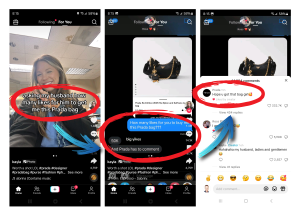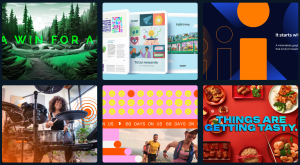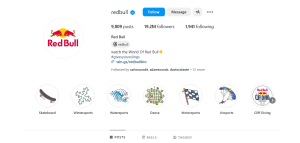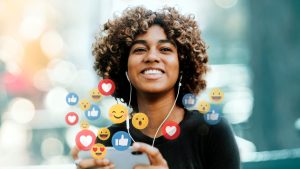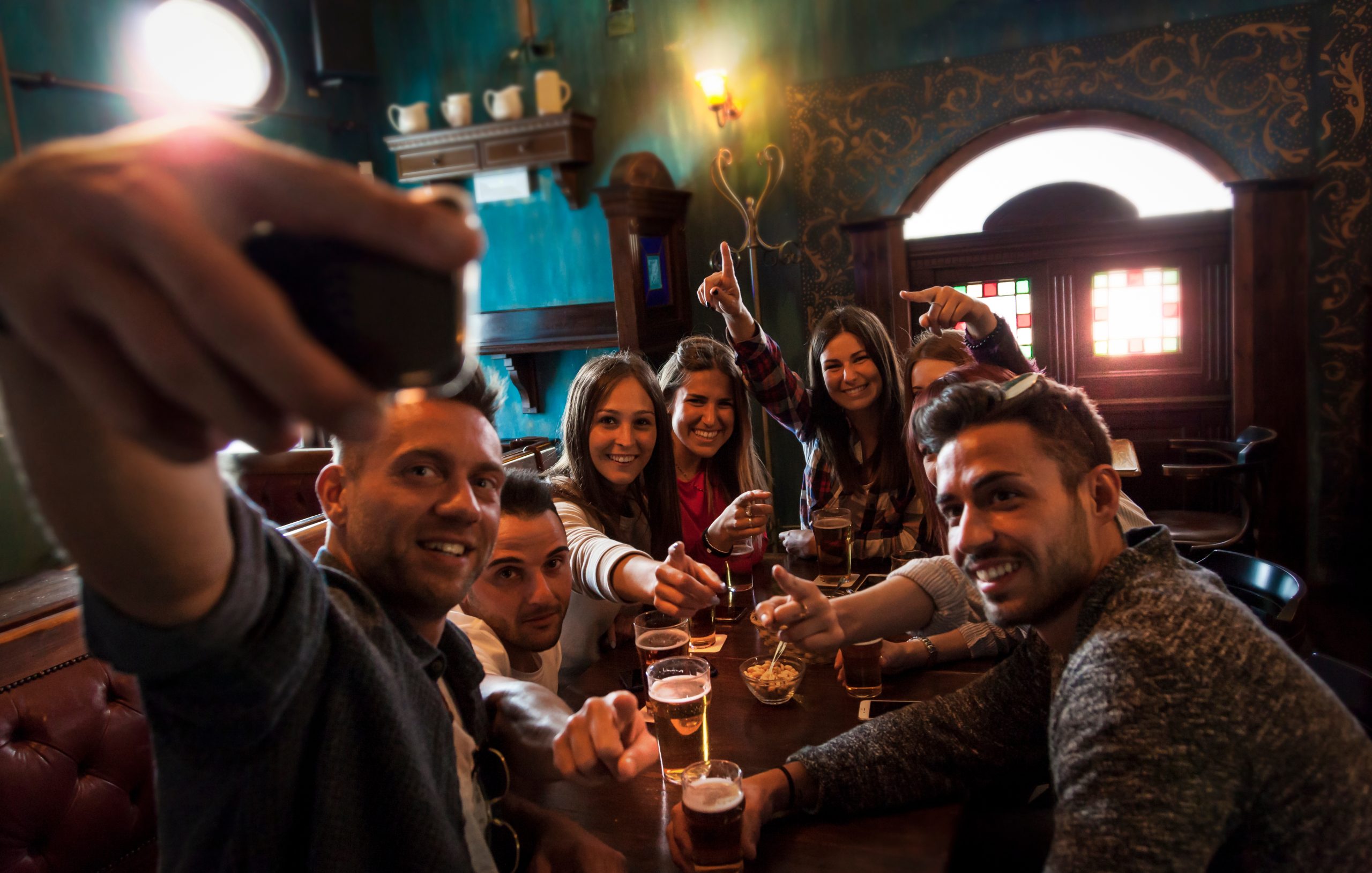
There’s an old adage in marketing: ‘sell the experience not the product’.
You may have heard it some other ways from: sell the sizzle, not the steak, or sell the hole, not the drill bit. These all aim at focusing on the benefits or outcome
Are You Selling 6-Minute Abs?
It’s easy to get caught up in the details: the features, the ingredients, the flavours, the taste, the coldness. These elements can be important as they may appeal to a consumer’s needs and preferences—but do they truly build loyalty?
I call this the ‘6 minute Abs’ approach. It promises efficiency and results, but it focuses entirely on the features of the product.
What happens when a competitor introduces ‘5 Minute Abs’?
Suddenly, the allure of the original is diminished. This analogy aptly illustrates how focusing solely on features can leave brands vulnerable to being outdone by a faster, shinier alternative.
The Power of Selling Experiences
To truly resonate with your audience and foster enduring connections, it’s essential to move beyond mere features. Instead, sell them an experience—an emotional journey that goes beyond the tangible. This is what sets brands apart in a crowded marketplace.
Think about why people go out for a beer. It’s rarely just about the taste. Sure, quality matters, but the decision to spend an evening at a bustling pub, spending an hour getting ready, driving, looking and paying for parking, paying a premium for a drink… who would do that for a beverage they can consume in the comfort and convenience of their home?
It’s not about the drink, it’s about the experience.
It’s about sharing moments, connecting with friends or loved ones, and creating memories. This is the essence of selling an experience.

What's Your Brand's RTB?
In marketing, creating a ‘Reason to Buy’ (also referred to as Reason to Believe) is crucial. It’s about giving consumers a compelling reason to choose your brand over others. This goes beyond listing features—it involves storytelling, evoking emotions, and aligning with your audience’s aspirations and values.
Imagine a scenario where a beverage brand doesn’t just tout its refreshing taste, but rather invites consumers into a narrative of relaxation after a long day, or the excitement of trying something new with friends. This approach not only sells a product but also embeds it into the consumer’s lifestyle and emotions.
Functional benefits are essential, but relying solely on them risks commoditizing your brand. I talk a lot of building a brand vs a commodity. Consumers seek more than just a solution to a problem—they crave experiences that enrich their lives, they look to join tribes, they look for values alignment. This shift in perspective can transform how your brand is perceived and deepen its resonance with consumers.
Selling experiences over features is not just a trend—it’s a strategic imperative for brands aiming to thrive in a competitive landscape.
It appears 1800 Tequila didn’t get the memo.
Taste is subjective and while it’s a factor in a consumer’s purchase decision, it’s not the most important. The experience is a much more powerful motivator.
Why?
Because people first buy with emotion, and justify second.
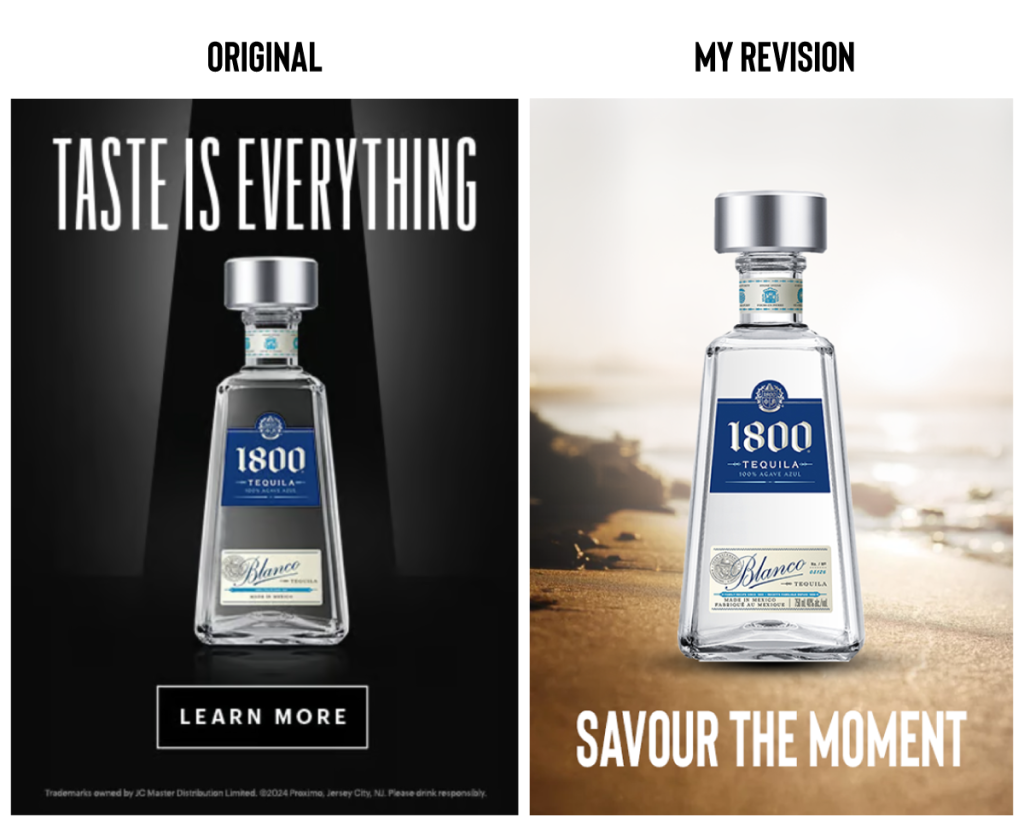
Case in point, Red Bull doesn’t taste particularly good for many people I’ve spoken with. Liquid Death is just water and I suppose is the absence of taste.
Yet, both of these companies are well known for creating distinct and strong brands.
In the case of 1800, I would argue that people tolerate the taste of tequila, most are not thinking about the taste. Instead, they’re drinking on vacation, while celebrating with friends, a solitude ritual… sell them that.
Craft a story about how your tequila is represents these moments, build that association over and over through social media, advertising, sponsorships, etc.
I wouldn’t even mention taste.
If I can pick on 1800 one more time, if you go to their Instagram account, nearly every post is just showing their bottle. 👎 👎
Nobody cares about your bottle.
While I also show a bottle in my ad, I did this only to create as close to an apples-to-apples comparison. I put my bottle on a beach at sunset with a tagline that pulls people into a moment that they can relate to.
By focusing on creating meaningful connections and emotional engagements, brands can foster loyalty that transcends transactional interactions.
So, the next time you’re crafting your marketing strategy, remember: sell the experience, not just the taste. It’s the key to building enduring relationships and standing out in a crowded market.
Maslow's Hierarchy of Needs in Consumer Psychology and Marketing
Maslow’s Hierarchy of Needs is a psychological theory proposed by Abraham Maslow in 1943, which posits that human needs are arranged in a hierarchy. People are motivated to fulfill basic needs before moving on to higher-level needs. Understanding this hierarchy can provide valuable insights for marketers aiming to appeal to consumers at different stages of need fulfillment.
The Hierarchy Explained
- Physiological Needs: These are the most basic human needs for survival, such as food, water, warmth, and rest.
- Safety Needs: Once physiological needs are met, the focus shifts to safety and security, including personal security, health, and financial stability.
- Social Needs: These include love, friendship, and a sense of belonging.
- Esteem Needs: After social needs are satisfied, esteem needs become important. These include the need for self-esteem, recognition, and respect from others.
- Self-Actualization: This is the highest level, where individuals strive to realize their full potential and achieve personal growth and fulfillment.
Applying Maslow’s Hierarchy to Marketing
1. Physiological Needs
- Product Examples: Food, beverages, clothing, and shelter.
- Marketing Strategy: Emphasize the essential nature of the product. Use messages that highlight how the product meets basic survival needs. For example, a bottled water company might focus on purity and hydration.
2. Safety Needs
- Product Examples: Insurance, healthcare products, home security systems.
- Marketing Strategy: Stress the safety, reliability, and protection offered by the product. An insurance company might use testimonials of customers whose lives were stabilized by their services.
3. Social Needs
- Product Examples: Social media platforms, dating apps, community events.
- Marketing Strategy: Highlight how the product fosters connections and a sense of belonging. For instance, a social media platform might emphasize how it keeps people connected with friends and family.
4. Esteem Needs
- Product Examples: Luxury goods, high-end fashion, professional services.
- Marketing Strategy: Appeal to the desire for status, recognition, and self-respect. A luxury car brand might market its vehicles as symbols of success and achievement.
5. Self-Actualization Needs
- Product Examples: Educational programs, personal development courses, creative tools.
- Marketing Strategy: Focus on personal growth, creativity, and fulfillment. A company offering online courses might highlight stories of individuals who achieved their dreams through learning and self-improvement.
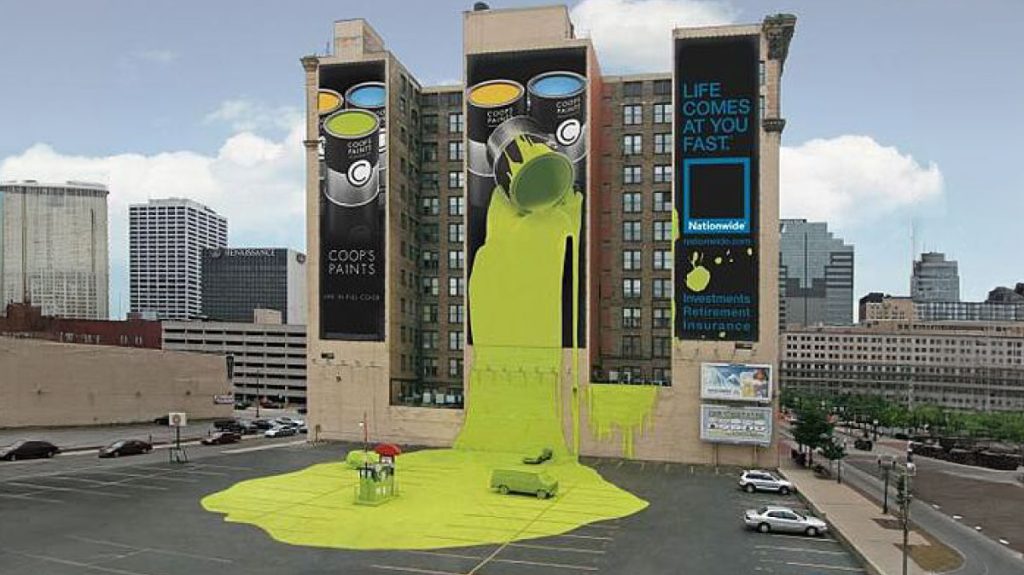
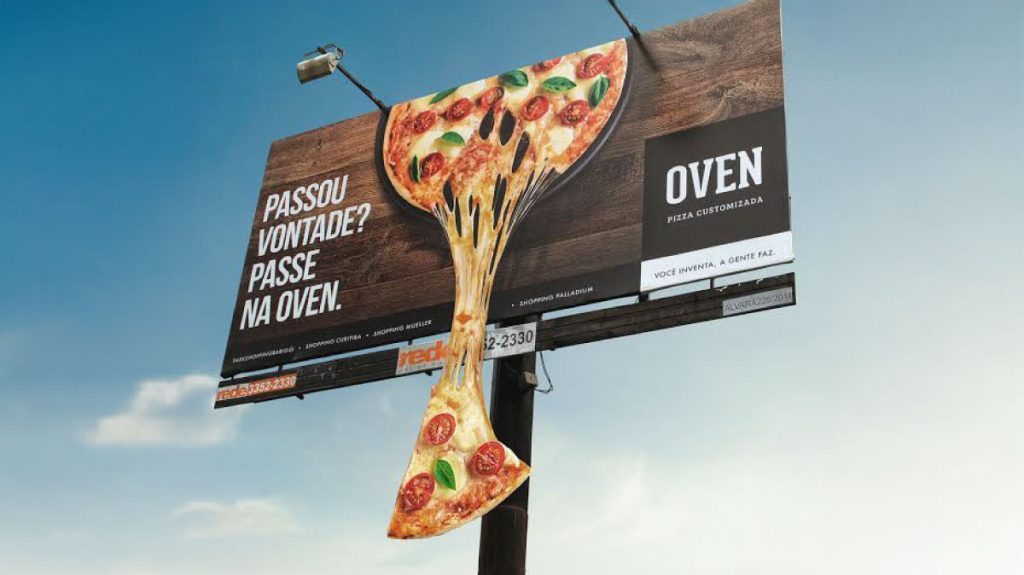
Continue reading: What’s the ROI of a Billboard
- Related post: The T-Shirt Theory of Branding
- Related post: The Power of Branding: John’s Family Premium Organic Garlic
- Related post: Why You Don’t Want to Run a Business that Relies Solely on Ads
Related Posts about Social Media
Need help with your marketing activities?
If you’re looking to make a move with your marketing, reach out to us. We are priced fairly, we’re straight shooters, and are the very best at what we do.



